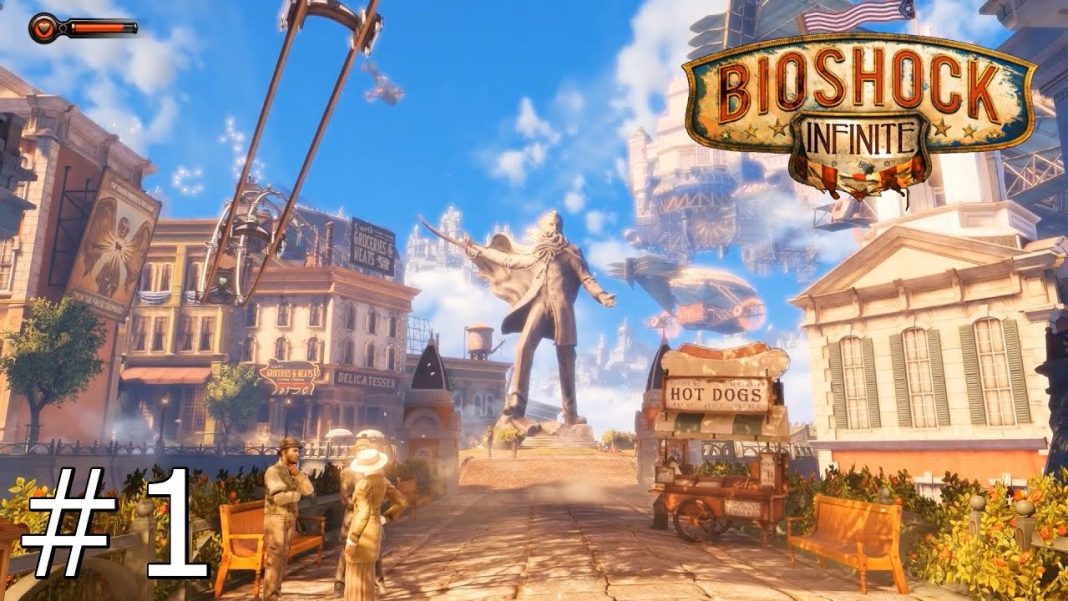In a surprising revelation for BioShock enthusiasts, recently surfaced concept art has unveiled an alternate design for the entrance area of the Welcome Centre in the iconic BioShock Infinite. The artwork, discovered on the BioShock subreddit, showcases a drastically different vision for the introductory stage of the game’s floating city, Columbia.
Conceptualized by renowned artist Ben Lo, the piece titled “Columbia Entrance” provides a glimpse into an initially envisioned grandeur, featuring towering sculptures of angels and an imposing monument dedicated to Zachary Hale Comstock, the game’s primary antagonist. The revelation has sparked a discussion among fans, with some expressing a preference for the early design over the one that eventually made it into the critically acclaimed 2013 release.
The journey of BioShock Infinite, developed by the now-defunct Irrational Games, was marked by a tumultuous development process. The game underwent several revisions, and numerous elements teased in marketing never materialized in the final product. The recently uncovered concept art sheds light on the evolution of Columbia’s design, indicating that even the lofty cityscape underwent significant changes before the game’s release.
Despite the variations in design choices, BioShock Infinite managed to captivate players with its distinctive narrative and visual style. The game’s unique setting, the airborne city of Columbia, became a hallmark of the BioShock series. The Welcome Centre, although evolving from its early concept, still stands as a testament to the game’s immersive and visually striking world.
While some members of the BioShock community have expressed a preference for the initial Welcome Centre design, it’s crucial to acknowledge the inherent differences between concept art and the practical constraints of game development. One Reddit user aptly noted that concept art tends to be more detailed and extravagant than what can be feasibly implemented in a video game.
The legacy of BioShock Infinite extends beyond its visual aesthetics. The game is celebrated for introducing Columbia as a living, breathing city-state with its unique culture and inhabitants. Its combat mechanics, hailed as the most open and fluid in the BioShock series, provided players with an engaging and dynamic experience. Additionally, the Burial at Sea expansion allowed fans to revisit the franchise’s original underwater setting of Rapture in its prime, adding a nostalgic layer to the overall gaming experience.
Looking towards the future, fans were delighted to learn in 2019 that Cloud Chamber, a different internal studio under the 2K umbrella, had taken up the mantle to develop the next instalment in the BioShock series. Anticipation is high for BioShock 4, which is expected to uphold the franchise’s legacy while introducing new elements to surpass its predecessors. The challenge lies in creating a unique setting that rivals BioShock Infinite’s Columbia and crafting an intriguing and complex villain that can stand alongside the memorable characters of the previous titles.
As the gaming community eagerly awaits the next chapter in the BioShock saga, the unearthed concept art serves as a reminder of the intricate development processes that shape beloved titles. Whether the alternate Welcome Centre design would have surpassed the final version is a matter of subjective interpretation, but it adds a layer of fascination to the rich history of BioShock Infinite and its contribution to the world of gaming.


